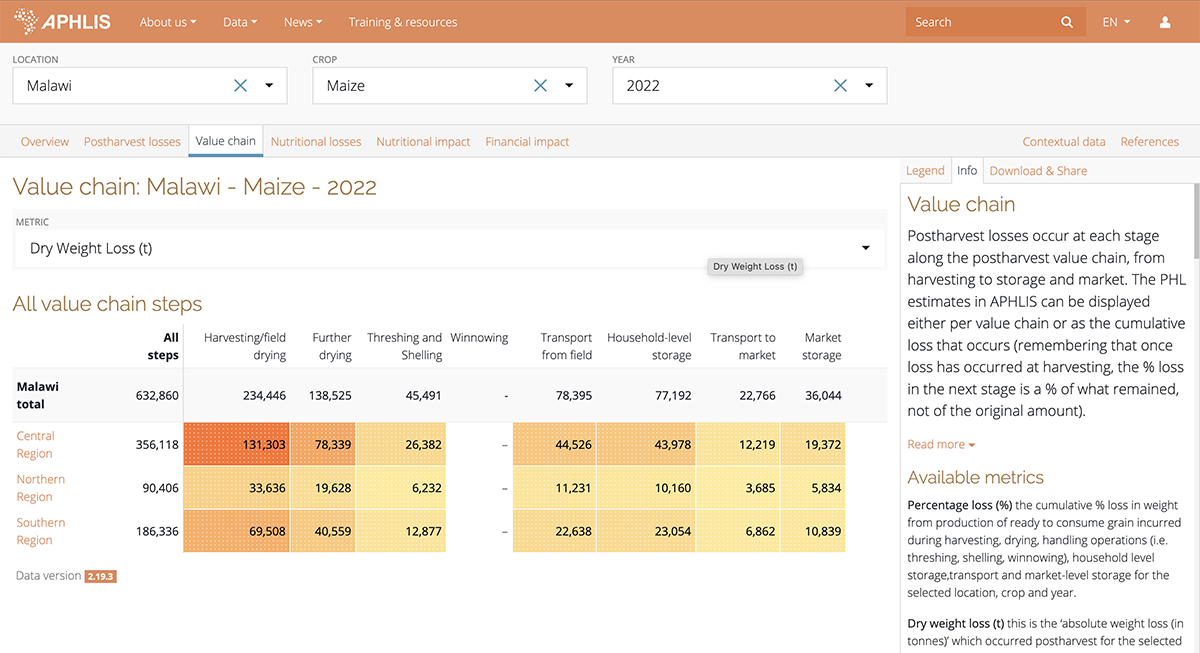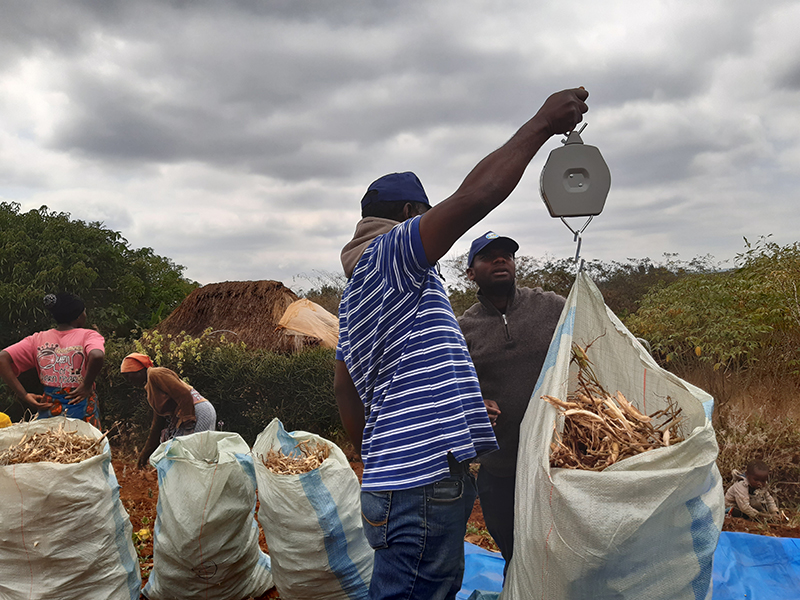While not immediately obvious, food loss and waste (FLW) are very complex phenomena. The data and metrics around the scale of FLW vary by commodity, location and year among other factors. FLW figures are the aggregated losses from each of the different activity stages in the value chain. For grains and dried crops, these are the losses of food during harvesting, transport, drying, threshing, winnowing, sorting, storing, processing and marketing. Waste on the other hand, is food that is discarded and not utilised at the retail level or consumed at the catering level, or by individual households.
In addition, many of the FLW figures that are cited are based on estimates rather than objective measurements of the actual losses occurring at different levels of the food system. Such data may not therefore be accurate. Actual measurements of food loss in terms of quantities lost, why, how and at what stages of the value chain they occur, is key for effective targeting of loss reduction interventions. Accurate measurement is equally pertinent for high, low-and-middle-income countries This level of detail is also needed to track progress against major FLW reduction goals such as the African Union’s Malabo Declaration to halve postharvest losses by 2025, or Sustainable Development Goal 12.3 to globally halve per capita food waste at retail and consumer levels and reduce food losses along production and supply chains by 2030.
Following the 2008 food crisis, there was increased demand for a more nuanced understanding of the scale of postharvest losses occurring along staple cereal crop value chains across Africa. In response, a team of researchers led by the Natural Resources Institute (NRI) examined existing loss data and created the African Postharvest Losses Information Systems (APHLIS).
In the last few years, the team have expanded APHLIS so it not only presents the percentage and quantities of crop loss, but also the financial and nutritional values of these losses – which are crucial for informing decision makers, helping them weigh up resource allocation. They have also expanded the crop focus so it also includes science-based estimates of the postharvest losses of key legume and root and tuber crops which are very important in the food systems of sub-Saharan Africa. This involved searching and screening existing loss data and supplementing it through detailed field work by APHLIS Network members in Benin, Nigeria, Togo, Tanzania and Uganda, measuring the losses occurring at each stage of the value chains of these food crops. They also studied the postharvest systems to understand the activities, tools, decision-making and roles within them to help in identifying practical loss reduction strategies.
The critical importance of more accurate and detailed loss measurements has since become apparent even to private sector organisations aiming to improve the efficiency of their supply chains. For example, the global agribusiness, Olam Agri has recently been measuring losses in their smallholder wheat, rice and sesame supply chains in Nigeria, identifying loss hotspots and causes and testing loss reduction interventions.
With more widescale adoption, such objective loss assessments will be key to food loss and waste reduction efforts, helping inform more pragmatic loss reduction interventions across the world.



